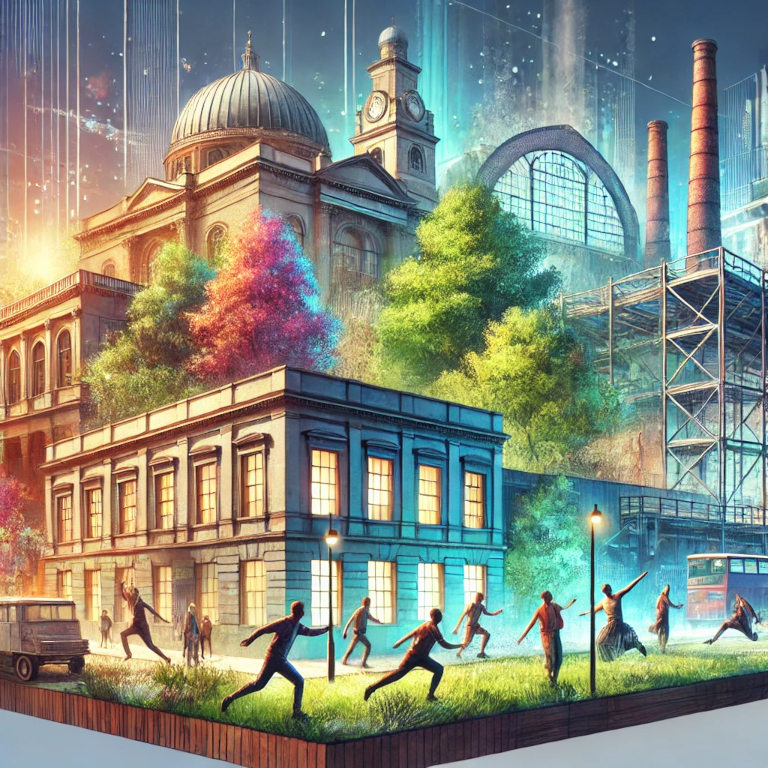Site-specific performances are a dynamic and immersive form of entertainment that transcends traditional theatre and performance boundaries. These unique experiences are designed to be performed in unconventional spaces, ranging from historic buildings and urban landscapes to natural environments and industrial sites. As an expert in entertainment, I will delve into the intricacies of site-specific performances, exploring their origins, appeal, and impact on audiences.
Understanding Site-Specific Performances
Site-specific performances are created with a particular location in mind, utilizing the unique characteristics of the chosen space to enhance the narrative and overall experience. Unlike traditional performances held in theatres, site-specific performances are deeply intertwined with their environment, making the location an integral part of the production. This form of performance art challenges conventional storytelling and engages audiences in a more intimate and interactive way.
Origins and Evolution
The concept of site-specific performance dates back to the mid-20th century, emerging as a reaction against the formal constraints of traditional theatre. Influenced by movements such as avant-garde theatre and performance art, site-specific performances sought to break free from the proscenium arch and explore new modes of expression. Artists and performers began to experiment with different spaces, creating works that were deeply rooted in the context and history of their locations.
Over time, site-specific performances have evolved to include a wide range of disciplines, from theatre and dance to music and visual art. This evolution has expanded the possibilities for site-specific work, allowing artists to create multidisciplinary experiences that engage all the senses.
The Appeal of Site-Specific Performances
- Immersive Experience: One of the most compelling aspects of site-specific performances is their ability to immerse audiences in the narrative. By utilizing the unique features of the location, these performances create a sense of place that is unmatched by traditional theatre settings. Audiences are often free to move around and explore the space, becoming active participants in the performance.
- Enhanced Storytelling: The physical environment of a site-specific performance adds layers of meaning and context to the narrative. For instance, a performance set in a historic building can evoke a sense of nostalgia and connection to the past, while a performance in an urban space can highlight contemporary social issues. This integration of site and story enriches the audience’s understanding and emotional engagement.
- Innovation and Creativity: Site-specific performances push the boundaries of creative expression, encouraging artists to think outside the box. The challenges posed by unconventional spaces often lead to innovative solutions and unique artistic choices, resulting in performances that are fresh, exciting, and unpredictable.
- Community Engagement: Many site-specific performances are deeply connected to their local communities, drawing inspiration from the history, culture, and people of the area. This connection fosters a sense of belonging and pride among community members, who may see their own stories and experiences reflected in the performance.
Notable Examples of Site-Specific Performances
- Sleep No More: This immersive theatre production by Punchdrunk transforms a series of warehouses in New York City into the eerie world of Shakespeare’s “Macbeth”. Audience members wear masks and roam freely through the elaborately designed spaces, piecing together the story as they go.
- The Tempest at the Donmar Warehouse: Staged in a London prison, this production of Shakespeare’s “The Tempest” utilized the stark, institutional environment to enhance the themes of confinement and freedom. The performance involved both professional actors and inmates, creating a powerful and poignant experience.
- Forest: The Nature of Time: Performed in a dense forest, this site-specific dance production by Inbal Pinto and Avshalom Pollak Dance Company blended movement, sound, and nature to explore the passage of time. The forest setting provided a magical and ever-changing backdrop for the performance.
- Underland: Created by Australian dance company Dancenorth, “Underland” was performed in an underground car park. The raw, industrial space complemented the performance’s themes of urban decay and resilience, creating a striking and memorable experience.
How to Experience Site-Specific Performances
- Research Local Events: Many cities have vibrant arts communities that regularly host site-specific performances. Check local event listings, arts organizations, and social media for upcoming productions.
- Visit Arts Festivals: Arts festivals often feature site-specific performances as part of their programming. Festivals such as the Edinburgh Festival Fringe, LIFT (London International Festival of Theatre), and the Adelaide Festival are known for showcasing innovative site-specific work.
- Explore Independent Productions: Independent theatre companies and performance artists frequently create site-specific work. Follow these groups online or subscribe to their newsletters to stay informed about their latest projects.
- Engage with the Community: Many site-specific performances involve community participation. Look for opportunities to volunteer, attend workshops, or participate in the creation process to gain a deeper understanding of the work.
Summary
Site-specific performances offer a unique and immersive form of entertainment that blends art with environment. By transforming unconventional spaces into stages, these performances create rich, multi-layered experiences that engage audiences on a profound level. Whether set in historic buildings, urban landscapes, or natural settings, site-specific performances push the boundaries of storytelling and artistic expression, making them a captivating and memorable addition to the world of entertainment.






